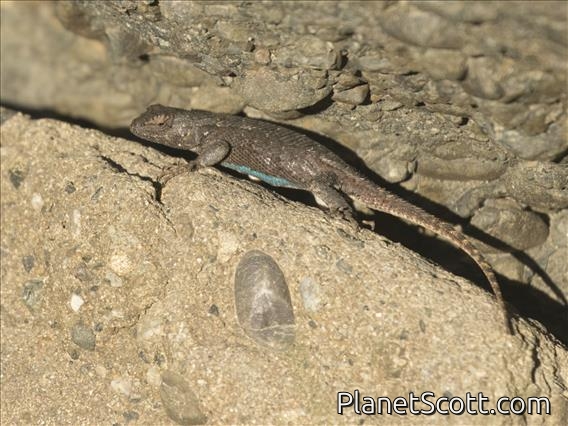Western Fence Lizard (Sceloporus occidentalis)

Western Fence Lizard (Sceloporus occidentalis)
×


Western Fence Lizard (Sceloporus occidentalis)
About Western Fence Lizard (Sceloporus occidentalis)
- Kingdom: Animals
- Phylum: Chordates
- Class: Reptiles
- Order: Lizards and Snakes
- Family: North American Spiny Lizards
The western fence lizard is a species of lizard native to Arizona, New Mexico, and California, as well as Idaho, Nevada, Oregon, Utah, Washington, and Northern Mexico. The species is widely found in its native range and is considered common, often being seen in yards, or as the name implies, on fences. As the ventral abdomen of an adult is characteristically blue, it is also known as the blue-belly. Two western fence lizards have been reported with duplicated or forked tails, presumably following an autotomy.
Source: Wikipedia
Trips
No trip reports available.Visits
-
2000-06-06
Mount Diablo State Park, United States of America -
2001-10-01
Henry Coe State Park, United States of America -
2002-07-30
Yosemite National Park, United States of America -
2002-08-01
Ventana Wilderness, United States of America -
2003-06-28
Yosemite National Park, United States of America -
2005-04-19
Pinnacles National Monument, United States of America -
2009-05-25
Edgewood Preserve, United States of America -
2013-06-05
Lake Tabeaud, United States of America -
2013-08-31
Mountain Lake, United States of America -
2014-06-07
Sunol Regional Wilderness--Visitor Center area, United States of America -
2019-05-10
Candlestick Park, United States of America -
2020-07-21
Rogue River, United States of America




